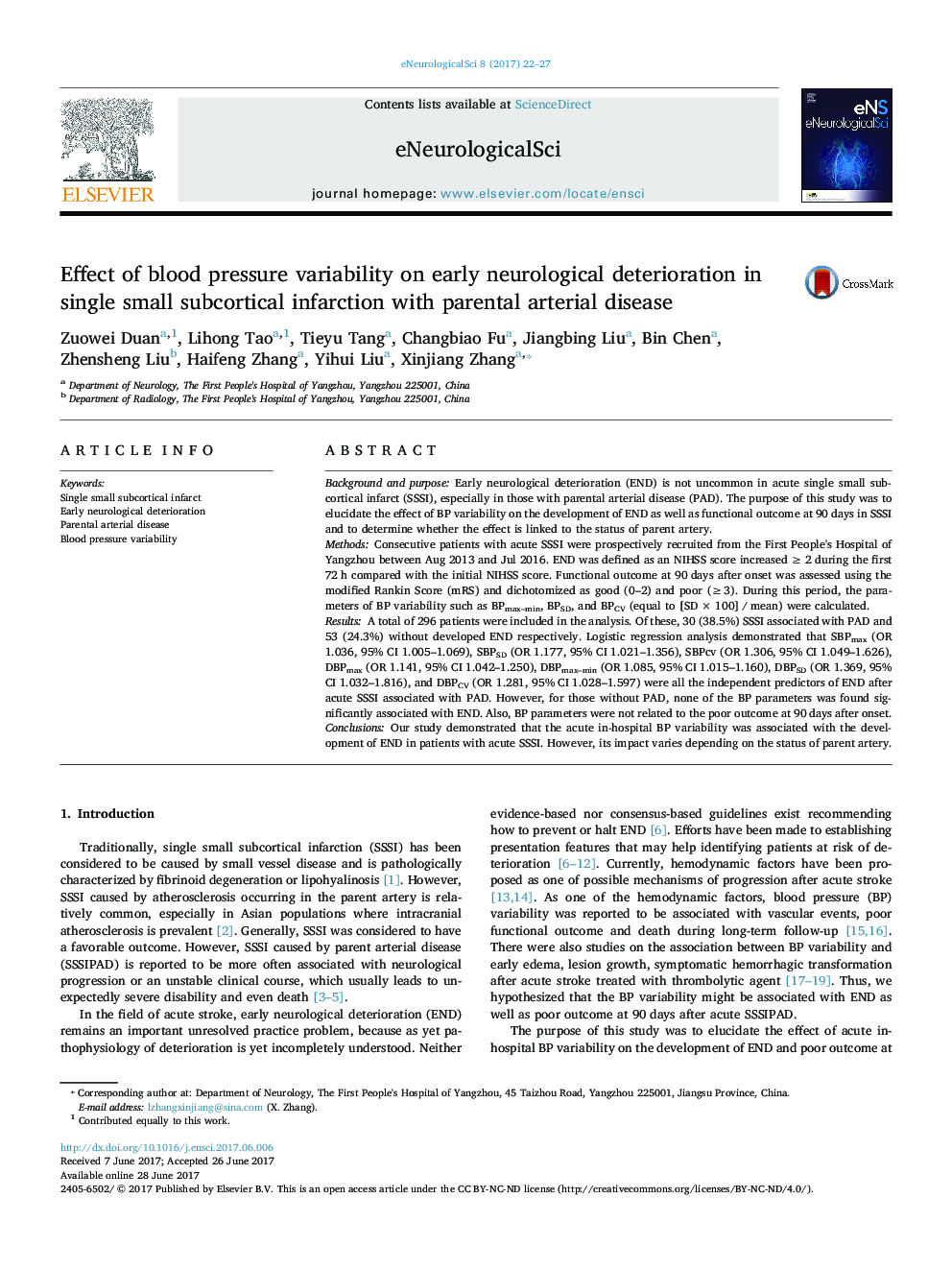| Article ID | Journal | Published Year | Pages | File Type |
|---|---|---|---|---|
| 5627970 | eNeurologicalSci | 2017 | 6 Pages |
â¢Generally, SSSI was considered to have a favorable outcome. However, SSSI caused by parent arterial disease (SSSIPAD) is reported to be more often associated with neurological progression or an unstable clinical course, which usually leads to unexpectedly severe disability and even death.â¢Early neurological deterioration (END), a relatively unfavorable clinical course often associated with poor outcome, is not uncommon in acute single small subcortical infarct (SSSI), especially in those with parental arterial disease (PAD). Hemodynamic factors have been proposed as one of possible mechanisms of progression according to recent studies. As one of the hemodynamic factors, BP variability was reported associated with early edema, lesion growth, END, symptomatic haemorrhagic transformation after acute stroke. However, the results were controversial. As for SSSI caused by PAD, because little is known regarding its clinical characteristics, outcomes and treatment strategies, whether the BP variability increases the development of END after acute SSSIPAD is largely unknown.â¢Our study demonstrated that the acute in-hospital BP variability was associated with the development of END in patients with acute SSSI. However, its impact varies depending on the status of parent artery.
Background and purposeEarly neurological deterioration (END) is not uncommon in acute single small subcortical infarct (SSSI), especially in those with parental arterial disease (PAD). The purpose of this study was to elucidate the effect of BP variability on the development of END as well as functional outcome at 90 days in SSSI and to determine whether the effect is linked to the status of parent artery.MethodsConsecutive patients with acute SSSI were prospectively recruited from the First People's Hospital of Yangzhou between Aug 2013 and Jul 2016. END was defined as an NIHSS score increased â¥Â 2 during the first 72 h compared with the initial NIHSS score. Functional outcome at 90 days after onset was assessed using the modified Rankin Score (mRS) and dichotomized as good (0-2) and poor (â¥Â 3). During this period, the parameters of BP variability such as BPmax-min, BPSD, and BPCV (equal to [SD Ã 100] / mean) were calculated.ResultsA total of 296 patients were included in the analysis. Of these, 30 (38.5%) SSSI associated with PAD and 53 (24.3%) without developed END respectively. Logistic regression analysis demonstrated that SBPmax (OR 1.036, 95% CI 1.005-1.069), SBPSD (OR 1.177, 95% CI 1.021-1.356), SBPcv (OR 1.306, 95% CI 1.049-1.626), DBPmax (OR 1.141, 95% CI 1.042-1.250), DBPmax-min (OR 1.085, 95% CI 1.015-1.160), DBPSD (OR 1.369, 95% CI 1.032-1.816), and DBPCV (OR 1.281, 95% CI 1.028-1.597) were all the independent predictors of END after acute SSSI associated with PAD. However, for those without PAD, none of the BP parameters was found significantly associated with END. Also, BP parameters were not related to the poor outcome at 90 days after onset.ConclusionsOur study demonstrated that the acute in-hospital BP variability was associated with the development of END in patients with acute SSSI. However, its impact varies depending on the status of parent artery.
